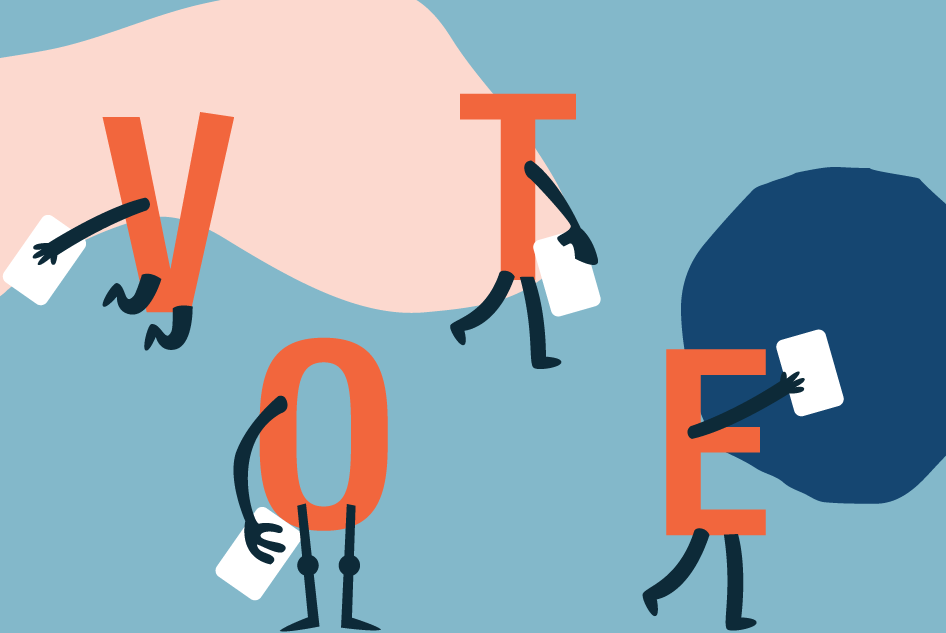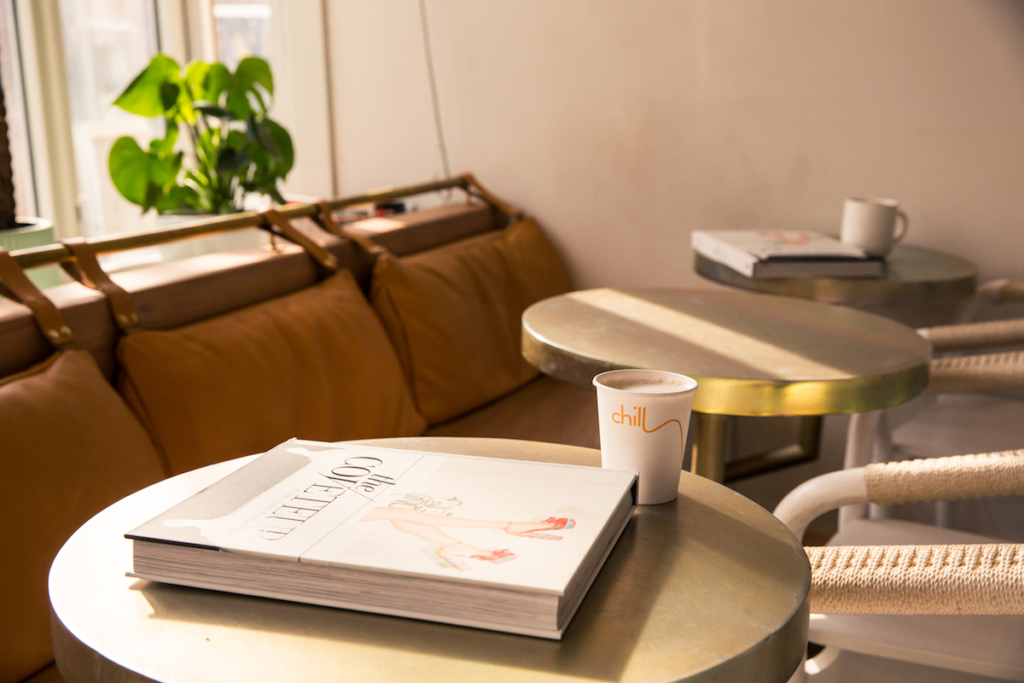
It is no secret this year has been filled with countless unknowns. However, today, I am here to beg you to focus on the one thing you can know how to do; vote.
With fifteen days left before election day, the race is on to navigate the voting process. Thanks to the coronavirus pandemic, voting in 2020 will be unlike no other. With an influx in mail-in ballots, increased in-person polling wait times due to social distancing, and a political climate far from bipartisan, it is more important than ever to have every voice heard.
As a Poll Inspector for New York State’s Ulster County, I am here to walk you through every step between now and November 3rd, as well as share a few insights shared amongst the poll workers to ease your concerns and answer your questions surrounding the next few weeks. With that being said, I am certified as a Poll Inspector in New York State. Every state has unique polling regulations, ballot restrictions, and voting prodigals. While some policies are universal, please check with your local counties and state Board of Elections to answer specific questions.
Know What is on Your Ballot
Voting can be daunting, especially if this is your first time filling out a ballot. Hauntingly similar to scantrons (am I old…? Are those still used…?), ballot forms are easier to comprehend if you can anticipate what will be on them. While all ballots will have the President of the United States as a Federal Race, regardless of the state where you reside, others may include races for State Senate, House of Representatives, State Assemblies, and local elections. Some states, such as New Jersey, will also be voting on statewide issues, such as the legalization of the use of recreational marijuana.
Regardless of what state you call home, I would recommend conducting research before you head to your designated polling site. One excellent source for a bipartisan way to get to know your state is Vote Save America. Filled with answers to all your frequently asked questions, information of your candidates, and ways to volunteer, I would recommend all voters check it out.
Know Your Voting Deadlines
For all voters, October 20th is the recommended deadline to send back all mail-in ballots, suggested by the United States Postal Service. Every state has a unique deadline for requesting and receiving mail-in ballots, clearly outlined here.
For New York State, early voting begins October 24th and will conclude on the evening of November 1st. On Election Day, November 3rd, voting will begin at 6 a.m. and will conclude at 9 p.m.
Know Your Polling Site
If you are venturing out to vote in-person, whether it be during Early Voting or on Election Day, it is essential to look up where you are registered to vote, and where your individual polling site is located. Due to social distancing requirements, longer lines than usual are expected in order to provide a safe experience for every voter, and thus, how horrible would it be for you to wait for an hour to vote at the wrong polling site! Save yourself a headache, aggravation, and time by double checking and creating a voting plan.
In New York State, you are not required to show an ID in order to vote in-person if you are not a first-time voter. The “Help America Vote Act” of 2002, requires all first-time voters to provide additional identification on or with the voter registration application, and may be asked to present this if the voting application was missing information. If you have recently moved, whether it be into the state, or within your county, I would also recommend bringing identification just in case there is a question internally, however, if a Poll Inspector asks you for your ID, you are allowed to challenge their reasoning. This is not a country-wide policy, as many states do require a form of identification.
Coronavirus Precautions
It is no secret that this year, polling sites will look a bit different than in past years. All Poll Inspectors, volunteers, and voters will be required to wear facial coverings and/or masks in order to reduce the potential spread of COVID-19. Along with this, all voters will be asked to wear a pair of gloves throughout the voting process, as many of the voting supplies, such as privacy folders and pens will be reused throughout the day, though they will be sanitized between uses. PPE, such as face shields, disposable face masks, and gloves will be provided at polling sites, though I recommend bringing your own to reduce wait times.
With that being said, one of the biggest concerns this year shared amongst Poll Inspectors and Board of Election Representatives is the potential for accidental Political Passive Electioneering through the use of statement face masks. For those who are unfamiliar with the term, Political Passive Electioneering is the act of wearing campaign paraphernalia or displaying political signs to a polling place with the intent of influencing voters. Typically, this is restricted within a pre-determined distance from polling sites, anywhere from 50-200 feet depending on your state. While many voters understand they cannot wear campaign pins, hats, or apparel to vote, the introduction of masks to our daily lives provides a new obstacle for Poll Inspectors. While many of us grab masks out of muscle memory now, any mask with a politically affiliated slogan, whether it be “Make America Great Again” or “Defund the Police”, may be asked to be turned inside out or replaced with a disposable face mask. Any voter has the right to point out infractions to Poll Inspectors, as voters may not speak with one another pertaining to political issues within the polling site.
Within New York State, all Poll Inspectors have the right to ask any voter to remove their political paraphrenia prior to entering the pre-determined distance from the polling site and can halt all polling until said voter removes their political merchandise.
Affidavit Ballots
What is an affidavit ballot? Most ballots are counted through the use of a scanning machine, however, sometimes, ballots will be counted by hand due to an array of possibilities. As mentioned before, identification can be required in a few occasions, such as recent move, and can result in the required use of an affidavit ballot. A paper affidavit ballot, also known as a provisional ballot, are used when believe yourself to be eligible to vote but cannot submit a regular ballot. For example, your name is not listed in the poll book, or your address has changed but your local board of elections did not update your file. If your name is not on the list, or your signature is missing, you have a right to vote by a paper “affidavit ballot.” You will be asked to sign an oath saying you are registered, mark a paper ballot, and seal it in an envelope. Elections officials will later check their records to see if you are registered and if you were at the right poll site. If yes, your vote will be cast. If not, you will receive a notice. It is always your right to vote on a paper affidavit ballot.
If you have questions, ask the poll worker for a “voting rights” flyer; they are required to have one. The flyer will also tell you about your right to get a court order to vote on a machine.
Poll Watchers: Who Are They?
Without getting too political, there is an increased concern throughout the public regarding self-appointed “poll watchers”. The rhetoric circulation regarding poll watchers is inherently a form of voter intimidation. Generating confusion and fear, many voters are unsure of what poll watchers can and cannot legally do within a polling site.
Firstly, poll watchers are not well meaning or self-appointed citizens who appear on Election Day in order to guard the democratic process. With that being said, all poll watchers are appointed by political parties, trained, and must provide a form or certificate stating so. While the specific rules vary per state, in New York State, poll watchers are there to observe and enforce rules alongside the Poll Workers. In some states, such as New York and Pennsylvania, poll watchers are allowed to keep a list of voters that have signed in throughout the day. Poll watchers may not speak with voters, take photographs of voters, or participate in electioneering. Poll watchers cannot interfere in any part of the electoral process apart from reporting issues or challenging a voter’s eligibility through an official process. All poll watchers must be trained and must not disturb the efficiency of the polling site.
iPads, Snacks, and Sneakers, oh my!
As mentioned previously through this article, on media outlets, and through Board of Election offices, wait times may be longer than usual this year in order to ensure safety for voters, poll workers, and poll watchers. Please be advised to wear comfortable shoes to stand in and bring food and water to provide nourishment in the worst case of situations.
In many states, Poll Workers have been transitioned to utilize iPads throughout the voting process. All voters within these states, will sign-in on a designated iPad with your district representative, however, they will still vote on a paper ballot. This may cause an additional delay as typically; poll workers are often predominantly composed of an older generation not accustomed to technology. Please be patient with us-we want each and every one of you to be able to vote.
Absentee or No Absentee
In New York State, regardless of whether you requested or submitted an absentee/mail-in ballot, you are entitled to vote in person on Election Day. If you choose to vote in-person, your absentee ballot will be nullified, diminishing the fear of voter fraud.
Now, it is important to note the current rhetoric regarding the reliability of the United States Postal Service. In an election year filled with political turbulence, social unrest, and the global coronavirus pandemic, the influx of mail-in ballots may be unprecedented. While many have begun to feel uneasy regarding the postal services’ ability to handle the number of ballots circulating throughout the system, others have been fueled by inflated media stories and political figures stoking fear. For those wishing to stay distanced, accounting for the real threat of the coronavirus, many states are offering official mail-in ballot drop off boxes at their local Board of Elections office. For New York State, Election Day polling sites will also feature an absentee ballot box in which voters can drop off their ballots in person to be counted, rather than place their faith in the postal service if they feel concerned. Each state may be different with this policy, so please check with your local Board of Elections.
–
In conclusion, it is okay to have questions regarding voting. The democratic process of representation can be confusing and full of unanswered questions. This has been a turbulent, taxing, and tiring year for us all, united in our fight against the unknown. It is not too late to volunteer, to make a difference, and to make this world a better place.
Regardless of result, support your family and friends. Reach out and check on one another. Be kind. Try to understand the opinions of strangers and treat one another with empathy. Here’s to a safer next four years.

